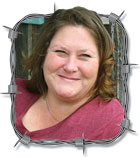
After interviewing a goat producer recently, I came back to the office and told my co-workers I wanted to get some dairy goats. I’ve always appreciated a good dairy animal, and they are just too much dang fun not to have around. Their reaction: “What does Bill think of that?”
Well, I haven’t told him. Maybe he won’t notice them, or the new fences, or that I have added a milking stanchion to his shop. He gets stuff all the time and doesn’t tell me, so what harm could a couple of goats cause? Well…
Certain breeds of haired sheep are also on my “agricultural-bucket list.”
There are breeds today that are just powerhouses of muscle. Even the staunchest cattleman should be able to look at a well-muscled animal and appreciate it. I did have a few haired sheep at one point, but Barbados sheep are more often admired for their “wild” look and their ability to jump and hit you about the chest as they look for an escape route, rather than their muscle.
I like the different breeds of wool sheep; each has its own unique traits. I love the larger-framed breeds because of their overall power and appearance, but there’s something about a small-framed sheep that produces wool that hangs like ringlets.
I have grown to appreciate a good Boer goat. The first time I saw a Boer was at the Missouri State Fair in the mid-1990s. Some of my sheep producer friends and I were impressed with the regal appearance of the bucks and the style of the does. Never seeing these animals before, it was an education. The Boers have evolved even more over the last few decades, and the breed continues to impress.
Small ruminant production is a large part of the agricultural landscape in the Ozarks, and it’s here to stay.
Depending on forages, you can graze two sheep or goats per acre, while you can graze one cow/calf pair on 3 to 4 acres. Sheep and goats are also very prolific, producing twins and triples.
Many producers in the Ozarks also have a multi-species operation, which allows them to graze their cattle, goats and/or sheep in a way that is beneficial for the pastures, the animals and the producer. It’s not a new practice, but it’s gaining in popularity.
There are also a few financial benefits in sheep and goat production.
Lambs and meat kids sell for more per pound than most feeder calves. Yes, producers will receive more per head for a feeder calf than a lamb or goat kid, but when one balances everything out, which species generates bigger profits?
After all the T’s are crossed and the I’s dotted, it just comes down to personal choice on what you raise on your farm, but don’t overlook those smaller animals.
I may never get my dairy goats or my stocky-haired sheep, but luckily I get to tell the stories of those in the Ozarks who are small ruminant producers through Ozarks Farm & Neighbor.
Julie Turner-Crawford is a native of Dallas County, Mo., where she grew up on her family’s farm. She is a graduate of Missouri State University. To contact Julie, call 1-866-532-1960 or by email at [email protected].






